Black float (Amanita Pachycolea)
- אָפּטייל: Basidiomycota (Basidiomycetes)
- סאַבדיוויזשאַן: Agaricomycotina (Agaricomycetes)
- קלאַס: Agaricomycetes (Agaricomycetes)
- סובקלאַס: Agaricomycetidae (Agaricomycetes)
- סדר: אַגאַריקלעס (אַגאַריק אָדער לאַמעללער)
- משפּחה: Amanitaceae (Amanitaceae)
- מין: אַמאַניטאַ (אַמאַניטאַ)
- Subgenus: Amanitopsis (Float)
- טיפּ: Amanita Pachycolea (Black float)
Fly agaric black
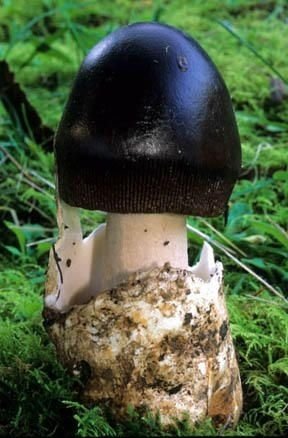 יעצטיגע טיטל:
יעצטיגע טיטל:
Amanita pachycolea D.E. Stuntz, Mycotaxon 15: 158 (1982)
Black float (Black fly agaric) – truly the king among the floats. It can grow up to 25 centimeters tall, with a hat 15 centimeters or more in diameter. Otherwise, it does not differ much from its closest relatives: the Volvo, the absence of a ring on the stem, the ribbed edge of the cap, especially in adulthood.
You can easily distinguish a black float from other floats, especially from a gray float, by color and size.
Like any float, in early youth, the fungus is something that looks like an “egg”: the embryo of the fungus develops inside the shell (the so-called “common cover”), which subsequently bursts and remains at the base of the fungus in the form of a shapeless bag called “volva” .
Photo of the “embryo” of Amanita pachycolea, here the Volvo has not yet burst:
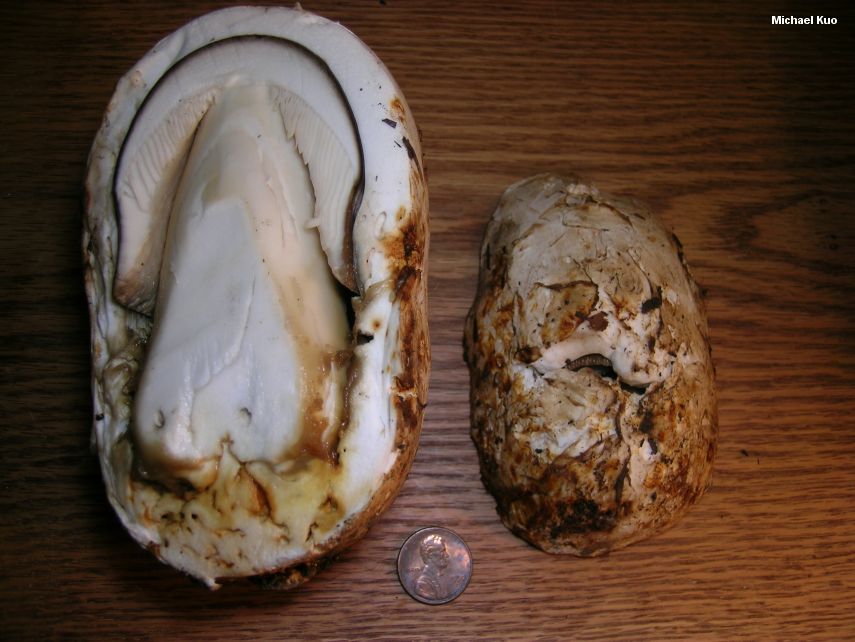
קאָפּ: 7-12 (up to 18) centimeters in adult mushrooms, initially convex or almost bell-shaped, with age – widely convex or flat, sometimes with a central tubercle, in young specimens – sticky. The color is dark brown, brown to black in young specimens, lighter with age, the edges lighten more, sometimes clear concentric zones can be distinguished. The surface of the cap is smooth, but sometimes, rarely, there may be convex white dots on the surface of the cap – these are the remains of a common veil. The edge of the cap in an adult mushroom is “ribbed” by about a third (30-40% of the radius). The flesh in the cap is white, rather thin at the edges, thickest just above the stem, 5-10 mm thick.
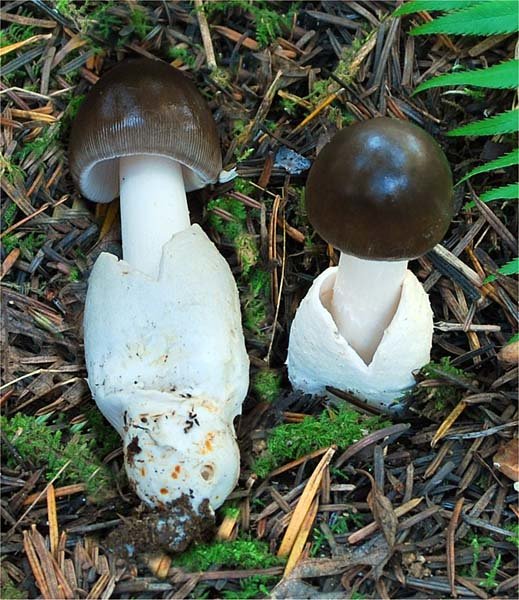
פּלייץ: Free. Frequent, with numerous plates. White, whitish-grayish, darkening with age to pale brownish or orange, with a darker edge.
פוס: 10-25 cm long, up to 3 cm thick, smooth or evenly tapering towards the apex, without thickening below. May be smooth or slightly hairy, usually with appressed fibrils or scaly fibrils. White, white to olive-yellow, sometimes dark brown to orange-brown. Dry, slightly silky to the touch. The pulp in the leg is white, loose, especially in the center, with age the leg becomes hollow.
קלינגען: Missing.
וואָלוואָ: Saccular, very large, felted, with uneven lobed ragged edges. Volvo pulp up to 5 mm thick, white on the inner surface, from white to creamy white, with age, rust spots appear on the outer surface, from brown to yellow-brown. Volva rises 80 mm from the base of the stem to the top of the highest “blade” and collapses with age.
פּאַפּ: white, does not change color when cut. The course of the larvae may acquire a grayish color over time.
שמעקן: faint, almost indistinguishable.
ספּאָר פּודער: ווייַס.
Under the microscope: spores 9-14 * 9-12 microns, smooth, colorless, spherical or slightly flattened, not starchy. Basidia are four-spored.
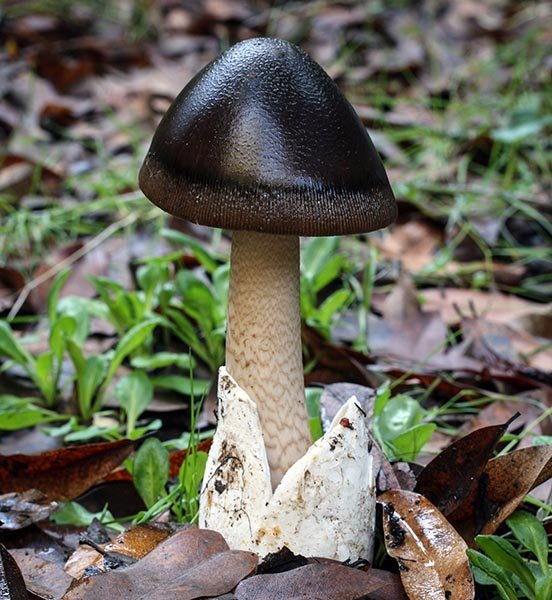
Forms mycorrhiza with coniferous trees, can grow both in coniferous and mixed forests.
Grows alone or in small groups, occurs from mid-autumn to winter (data for the western coast of North America).
Official observations of the fungus in southwestern Canada, in northern California, there are reports of findings on the Pacific coast in the states of Oregon and Washington, as well as in British Columbia. There are no data for other countries yet, but this does not mean that the Black Fly Agaric cannot grow somewhere in other places on the globe.
Map with marked officially registered finds, as of autumn 2021 (screenshot from mushroomobserver.org):
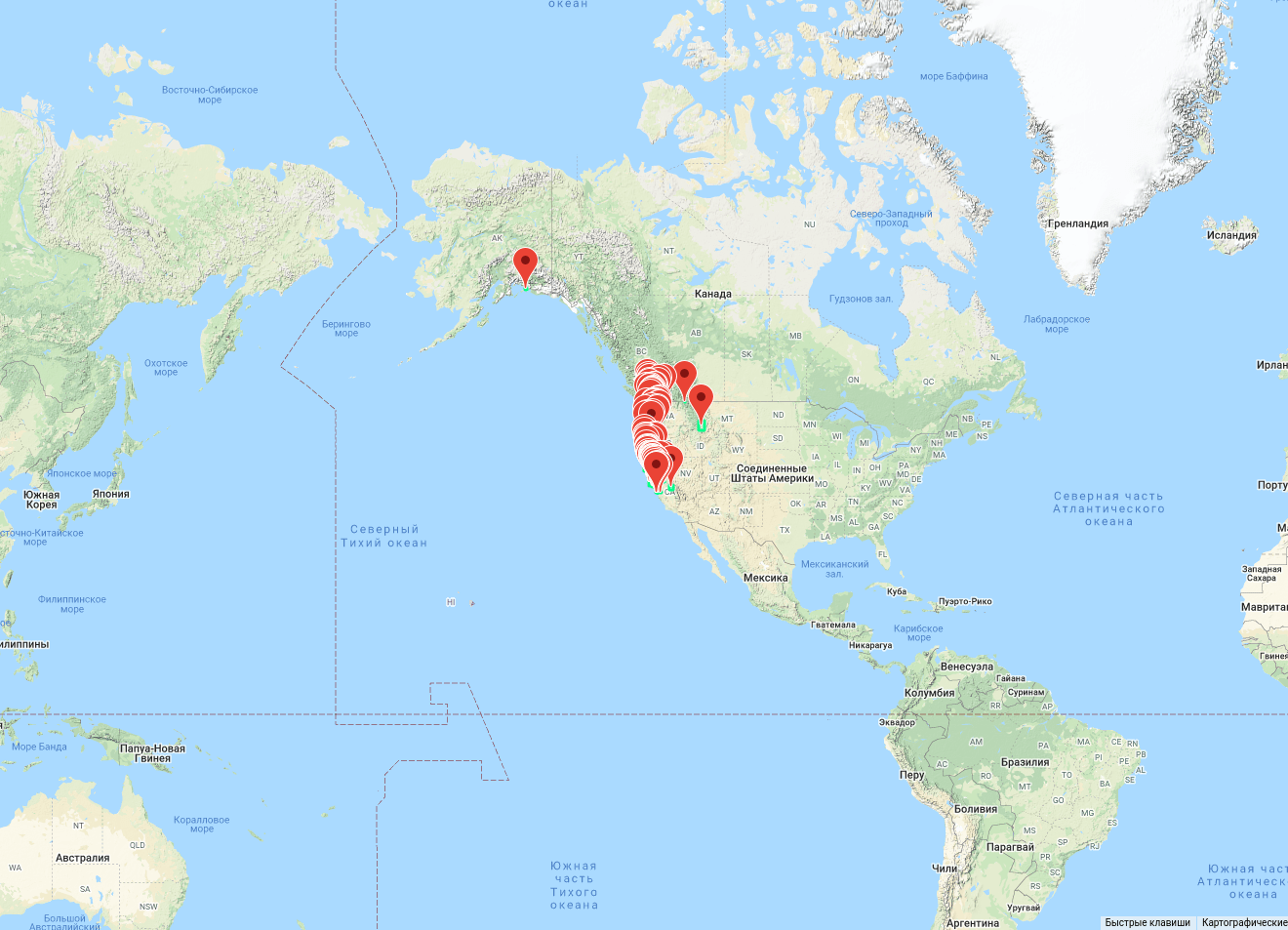
Presumably, the Black float could have already been brought to the Far East.
There is no reliable information from -speaking sources. All floats are considered conditionally edible mushrooms, but they are rarely harvested. Inexperienced mushroom pickers are afraid to confuse the float with some poisonous fly agaric or pale grebe. In addition, the mushroom is quite fragile, which makes it difficult to transport it.

גרוי פלאָוט (אַמאַניטאַ וואַגינאַטאַ)
The closest analogue, widely distributed in Our Country and European countries, is the Gray Float, which is much smaller, the hat is lighter, can grow not only with conifers, but also in deciduous forests and in open areas.
This post uses photos from Michael Kuo and from the web. The site needs photos of this species.









